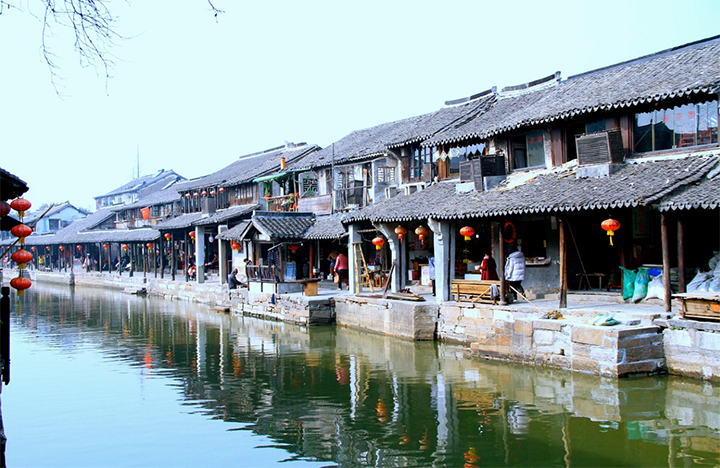



Source:https://pixabay.com/zh/photos/nanjing-fuzimiao-architecture-740026/
Since 1982, Nanjing was announced by the State Council as one of the first batch of "National Famous Historical and Cultural Cities", Nanjing has organised the preparation of four versions of historical and cultural city protection planning. This reporter was recently informed that the Nanjing Municipal Bureau of Planning and Resources on the new version of the Nanjing Historical and Cultural City Protection Plan for publicity, which is the city's fifth version of the city's historical and cultural city protection plan.
Over the years, Nanjing has been committed to the protection of historical and cultural cities, exploring the road of urban and rural historical and cultural protection in the process of rapid urbanisation. It has carried out a series of protection, utilisation and display of famous historical and cultural cities, and achieved remarkable results. The plan aims to realise the conservation objective of "an important hub of Chinese culture, an outstanding representative of the world's ancient capitals, and a famous historical and cultural city with wide international influence". It builds three planning spatial levels: the old city, the core area of the ancient capital and the city area, and continues to implement the strategy of "preserving the old city and building the new city" and "double control, double enhancement" of the old city.
At the spatial level, the old city is bounded by the opposite bank of the moat (lake) of the Ming capital city wall. The core area of the ancient capital is the area bounded by the outer city wall of the Ming Dynasty, the Qinhuai New River and the Yangtze River. The city area refers to the administrative jurisdiction of Nanjing. For the old city, we have to protect the whole city, including the historical roads and alleys, and maintain the direction and pattern of the roads formed since the Six Dynasties and the Southern Tang Dynasty. We also need to protect the road pattern of Zhongshan North Road, Zhongshan Road and Zhongshan East Road as the skeleton of the former National Government, and protect the historical streets and alleys and boulevards formed in different historical periods of the Old City. At the same time, we have to clarify the list of streets and alleys that will never be widened; control the height of buildings in the Old City, and maintain the overall spatial pattern of the Old City including"low near the wall, high far the wall, low in the periphery, high in the centre, low in the south, high in the north". Further strictly control the building heights in the historic urban area, neighbourhood lots and along the Ming City Wall. Protect the iconic landscape nodes and the related nine important landscape corridors, showing the environmental characteristics of mountains, water, cities and forests intermingling with each other.
Nanjing has identified four historic urban areas, namely Chengnan, Ming Palace, Gulou-Qingliangshan and Beijing East Road. The plan proposes to protect and continue the traditional pattern, spatial form, historical style and environmental features of the historic urban areas. In terms of traffic organisation, diversion should be the main focus, with priority given to the development of public transport and slow-moving traffic.
Specifically, for the southern part of the historic district, we should protect and continue the cultural landscape of "city, river, mountains, towers, temples, houses", and form a characteristic area that reflects the traditional style of the old city of Nanjing in the Ming and Qing dynasties. For the Ming Imperial Palace Historic District, we have to protect and display the remains of the Ming Imperial City, the Palace City, the moat and other ruins, identify historical information, and form a characteristic area to display the pattern of the Ming Dynasty Imperial City. For the Gulou-Qingliangshan Historic District, we have to protect and display the modern historical and cultural resources and the natural environment of the stone city of Qingliangshan, forming a special district that highlights the geographical features of "Dragon Coiling and Tiger Crouching", the modern Nanjing style and the rich humanistic atmosphere. As for the East Beijing Road Historic District, we have to protect and display the landscape of the district, which is surrounded by mountains and water and blended with the city and forests, to form a cultural district mainly for cultural exhibitions, tourism and leisure, and to focus on highlighting the characteristics of "mountains, water, city and forests".
There are 11 historical and cultural districts in Nanjing, including Summer Palace Road. This plan proposes to protect and continue the overall pattern, spatial scale and historical features of the neighbourhood lots, maintain the continuity and vitality of the social life of the neighbourhood lots, and actively improve the quality of the infrastructure and human environment. For the world cultural heritage of one 8-point site and 867 (942 points) cultural relics protection units, it is proposed to implement in-situ, in-place and in-phase protection, and to protect the real historical information.
In this plan, Nanjing proposes to strengthen heritage display and cultural heritage protection. Take the old city, Purple Mountain as the main body, make full use of the Ming City Wall, moat, the outer city wall of the Ming Dynasty, Qinhuai River and other corridors, historical and cultural resources, scenic spots and other weaving, stringing, integration, and further open up the Xuanwu Lake lakeside shoreline, activate the ring of Purple Mountain cultural functions, build the cultural and ecological network of the ancient capital.
In terms of supporting facilities, the construction of museums reflecting Nanjing's science and technology, art and culture of various dynasties, including memorial halls for celebrities, and the construction of heritage parks. A series of markers representing Nanjing's historical and cultural characteristics will be designed at city gateways, window lots and along historical and cultural corridors. The plan puts forward proposals for protection and implementation mechanisms, protection planning and map preparation, effective connection with spatial planning, and sound public participation and social supervision mechanisms.
Source: <https://www.planning.org.cn/news/view?id=14621&cid=12>
Translated by Gong Ye